Medinz: Journey Through Fez's Rich Heritage
Join our captivating Medinz tour through Fez's vibrant streets, exploring its rich history and culture on this free walking tour of the city.
Time
3 Hours
Stops
9 Places
Distance
3.1 km
Bab Bou Jeloud (Blue Gate)
Start your journey at the iconic Bab Bou Jeloud, the main entrance to the Medina, known for its stunning blue tilework, which serves as a gateway into the historic heart of Fez.
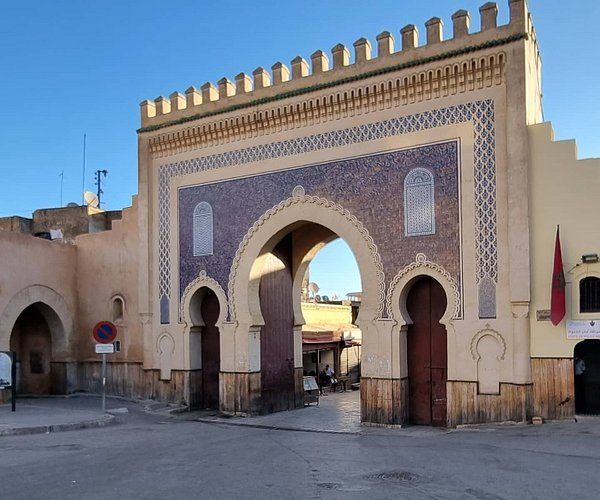
Bab Bou Jeloud (Blue Gate) (Source: Google Maps)
Bab Bou Jeloud, or the Blue Gate, is the main entrance to the historic Medina of Fez, Morocco. Constructed in the early 20th century, it serves as a stunning gateway adorned with intricate blue tilework that reflects the artistry of Islamic architecture. The gate is not only a visual delight but also a symbol of Fez's cultural heritage, representing a blend of Moroccan and Andalusian influences. Historically, it has welcomed countless travelers into the city's labyrinthine streets, which are filled with vibrant souks and historic sites. Its grandeur and significance make it an essential starting point for those wishing to explore the rich history of Fez.
Dar Batha Museum
Discover a collection of traditional Moroccan arts and crafts in this 19th-century palace-turned-museum, offering a deeper understanding of the region's cultural heritage.
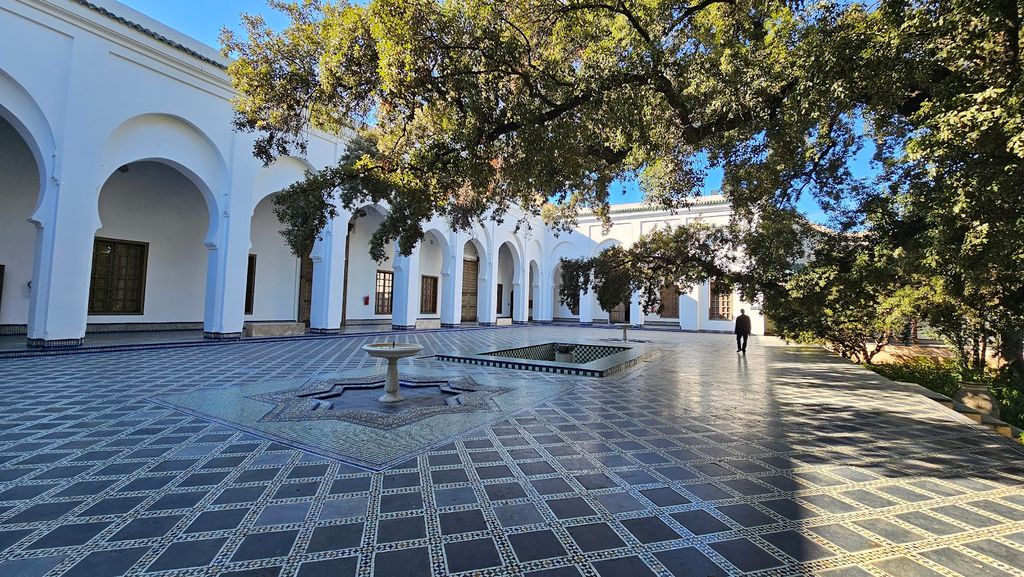
Dar Batha Museum (Source: Google Maps)
The Dar Batha Museum is housed in a beautiful 19th-century palace that was once the residence of the king's brother. This museum showcases a remarkable collection of traditional Moroccan arts and crafts, including exquisite ceramics, woodwork, and textiles. The architecture of the palace itself is a stunning example of Moroccan design, featuring intricate tile work and lush gardens. As visitors wander through the museum, they gain insight into the cultural heritage and artistic traditions of Fez and Morocco as a whole. The museum also hosts various exhibitions and cultural events, making it a vibrant center for art and history in the city.
Bou Inania Madrasa
Just a short walk from Bab Bou Jeloud, this 14th-century madrasa is one of the few religious sites in Morocco that is open to non-Muslim visitors, showcasing exquisite Marinid architecture.
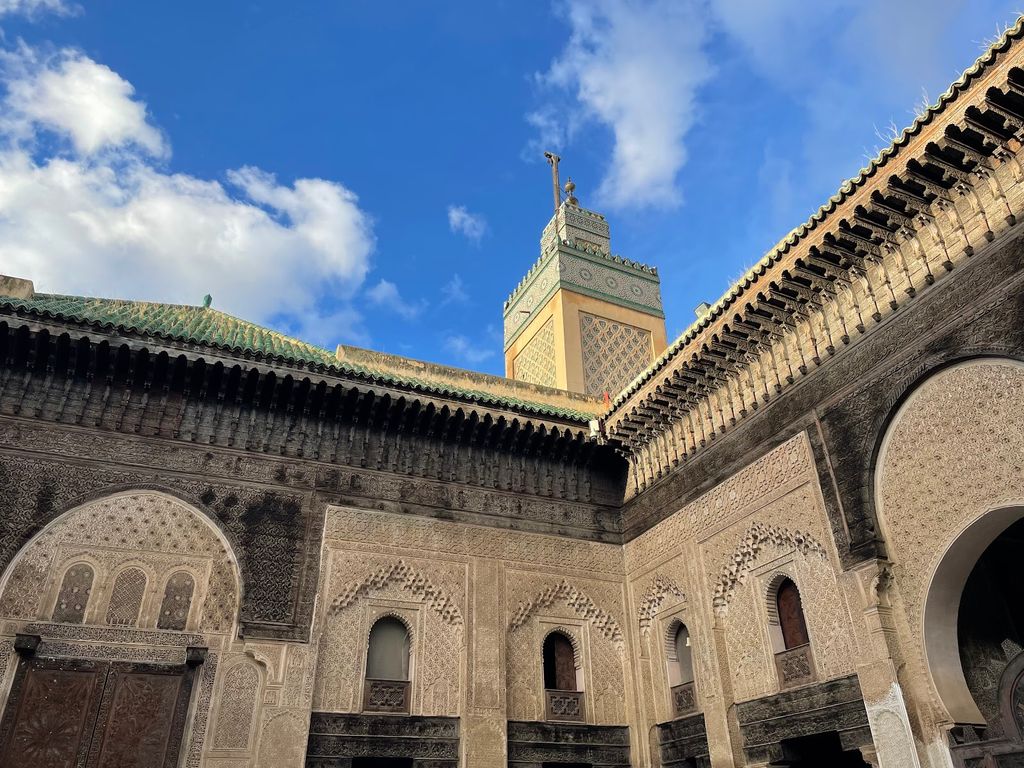
Bou Inania Madrasa (Source: Google Maps)
The Bou Inania Madrasa, built in the 14th century, is one of the few religious sites in Morocco that welcomes non-Muslim visitors. It is a prime example of Marinid architecture, showcasing stunning tile work, intricate wood carvings, and a beautiful courtyard that reflects the artistic mastery of the era. This madrasa served as an educational institution, where students studied Islamic theology, law, and literature. The exquisite details in its architecture, including the finely carved woodwork and elaborate stucco, offer a glimpse into the architectural innovations of the time. The Bou Inania Madrasa remains a significant landmark, symbolizing the historical importance of education and scholarship in Fez.
Café Clock
Take a break at Café Clock, a popular spot that offers traditional Moroccan dishes and refreshing drinks, perfect for a quick rest before continuing your exploration.
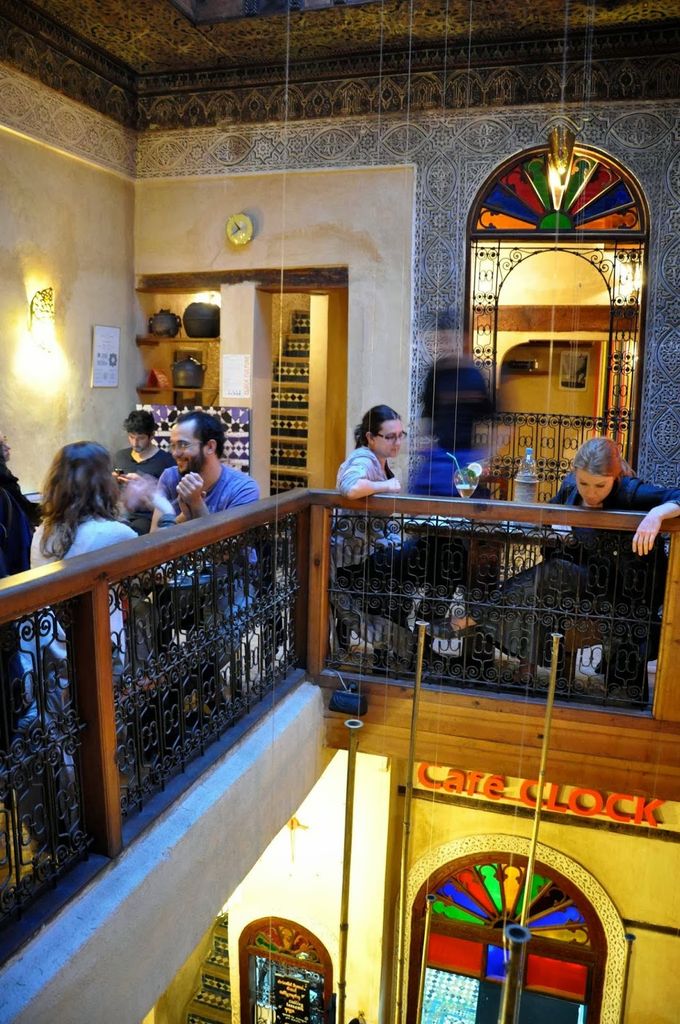
Café Clock (Source: Google Maps)
Chouara Tannery
Witness the ancient leather tanning process at one of Fez's most famous tanneries, where you can observe craftsmen at work from nearby terraces.
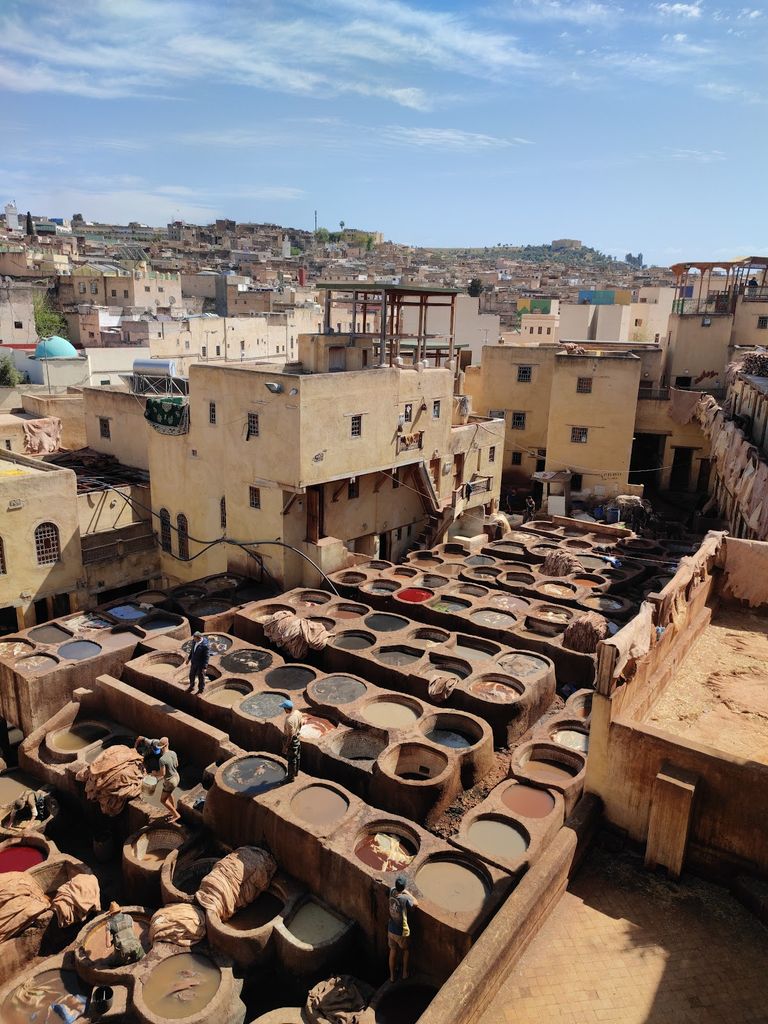
Chouara Tannery (Source: Google Maps)
The Chouara Tannery is one of the oldest and most famous tanneries in Fez, renowned for its traditional leather tanning process that has been practiced for centuries. Visitors can observe skilled artisans working in the dyeing pits, where animal hides are treated and colored using natural pigments. The vibrant colors of the leather and the unique techniques employed here reflect the rich craftsmanship that Fez is known for. The tannery not only illustrates the labor-intensive process of leather production but also highlights the cultural significance of the leather trade in the region's economy. A visit to the Chouara Tannery offers a fascinating insight into the ancient practices that continue to thrive in modern-day Fez.
Al-Attarine Madrasa
This historic madrasa is renowned for its intricate tilework and wood carvings, providing insight into the educational and architectural heritage of Fez.
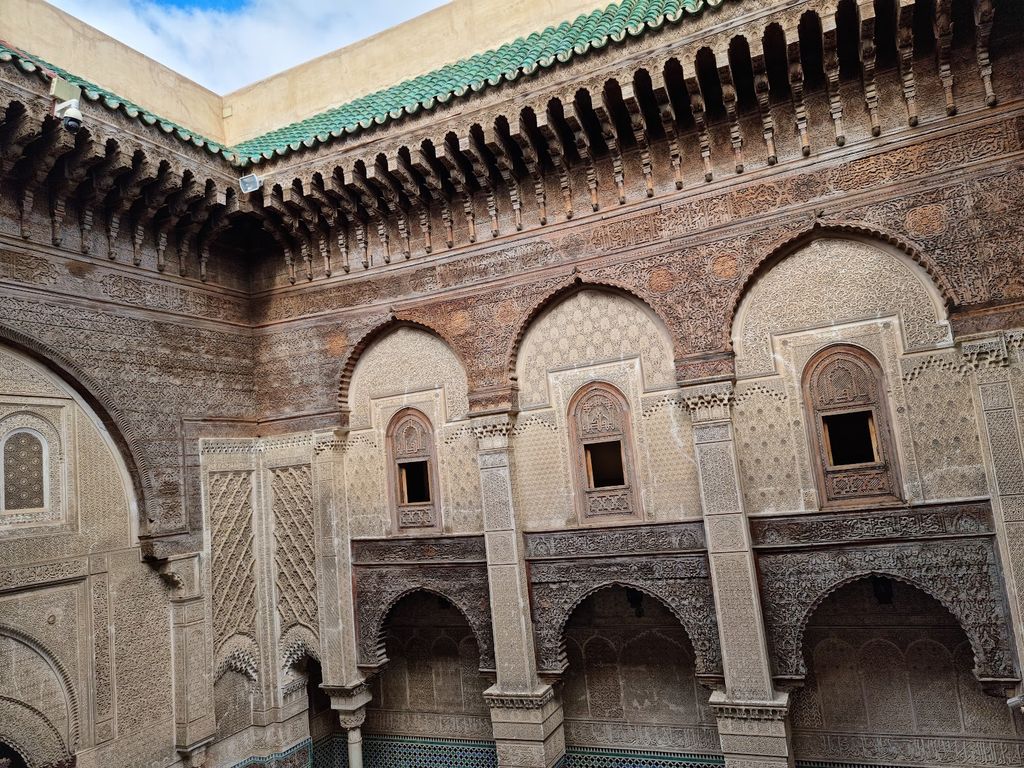
Al-Attarine Madrasa (Source: Google Maps)
The Al-Attarine Madrasa, built in the 14th century, is a significant example of Islamic architecture in Fez, known for its stunning tilework and intricate wood carvings. This madrasa was established to provide education in Islamic studies and has been a center of learning for centuries. The architectural features, including the beautifully decorated courtyard and prayer hall, showcase the artistry and craftsmanship of the time. The elaborate zellij tile mosaics and carved wooden ceilings reflect the rich cultural heritage of the city. The Al-Attarine Madrasa remains an important landmark, symbolizing the historical role of education and religion in the cultural fabric of Fez.
Place Seffarine
Experience the vibrant atmosphere of this square, known for its traditional metalworking shops where artisans craft stunning brass and copper items.
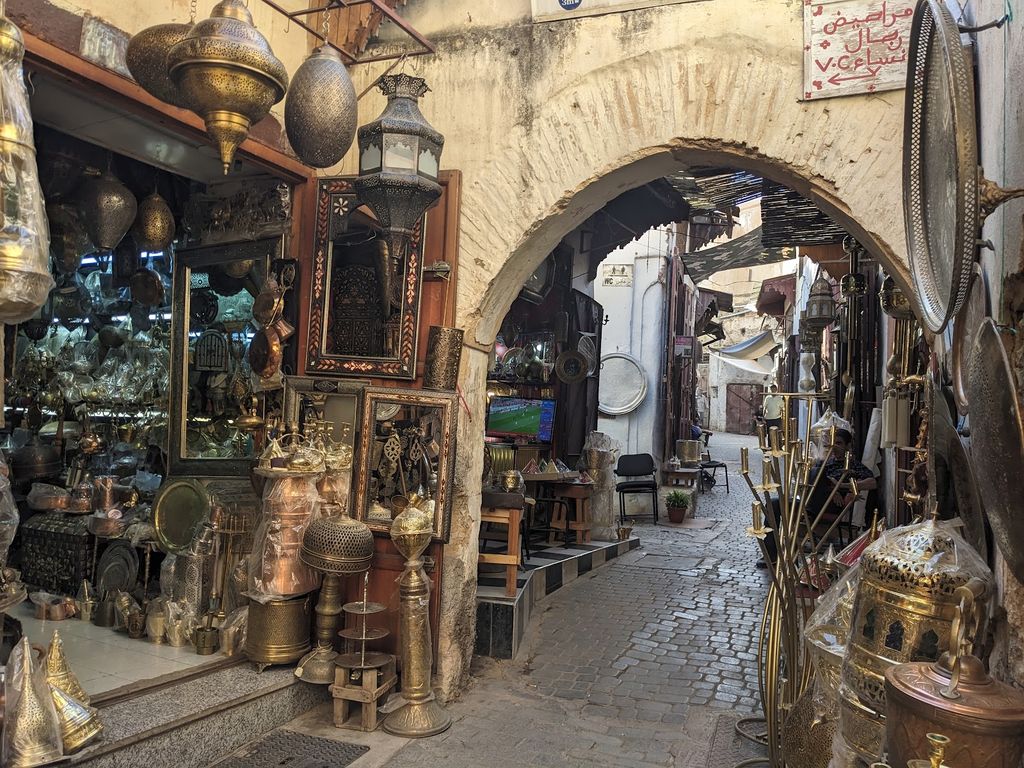
Place Seffarine (Source: Google Maps)
Place Seffarine is a vibrant square in the heart of Fez, renowned for its traditional metalworking shops where artisans craft exquisite brass and copper items. This bustling marketplace is a hub of activity, showcasing the skill and artistry of local craftsmen who have honed their trade over generations. Visitors can witness the intricate process of metalworking, from shaping to polishing, and explore a variety of handcrafted products, including decorative items and utensils. The square is not only a place of commerce but also a cultural gathering point, where locals and tourists alike experience the rich traditions of Fez. Place Seffarine embodies the spirit of craftsmanship that has defined the city's identity for centuries.
Zaouia Moulay Idriss II
Visit this important religious shrine, dedicated to the founder of Fez, which is a significant pilgrimage site and offers a glimpse into the spiritual life of the city.
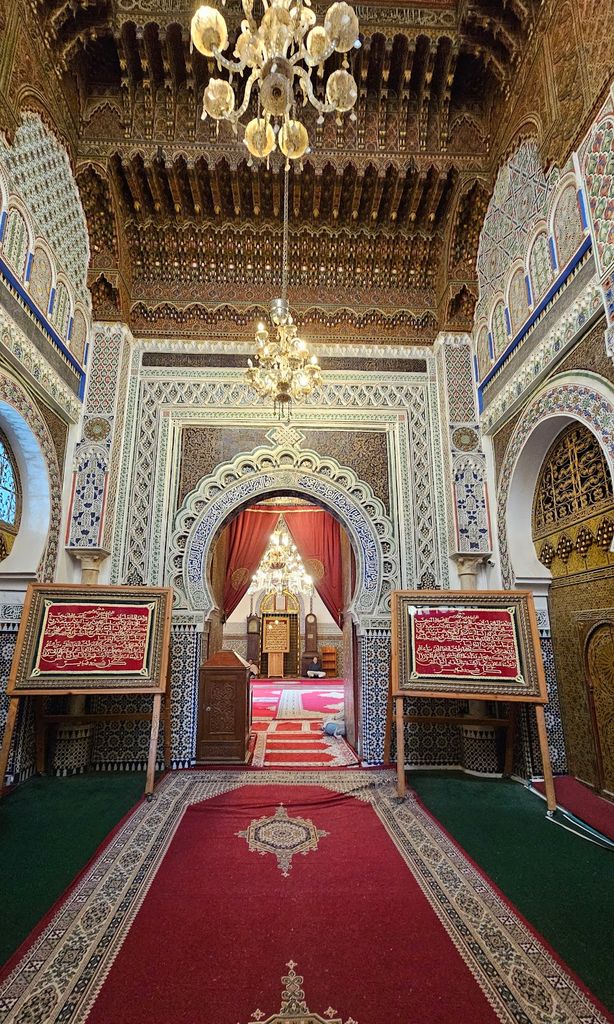
Zaouia Moulay Idriss II (Source: Google Maps)
The Zaouia Moulay Idriss II is an important religious shrine dedicated to the founder of Fez, a significant pilgrimage site for many. This shrine honors the legacy of Moulay Idriss II, who played a crucial role in establishing Fez as a center of Islamic learning and culture in Morocco. The shrine features beautiful architecture, with intricate tile work and a serene courtyard that invites reflection and prayer. Pilgrims and visitors come to pay their respects and seek blessings at this revered site, which is deeply embedded in the spiritual life of the city. The Zaouia Moulay Idriss II serves as a reminder of Fez's historical significance as a hub of spirituality and education.
Souk el Henna
Conclude your tour at this vibrant market, known for its henna, spices, and traditional beauty products, providing an authentic shopping experience in the heart of the Medina.
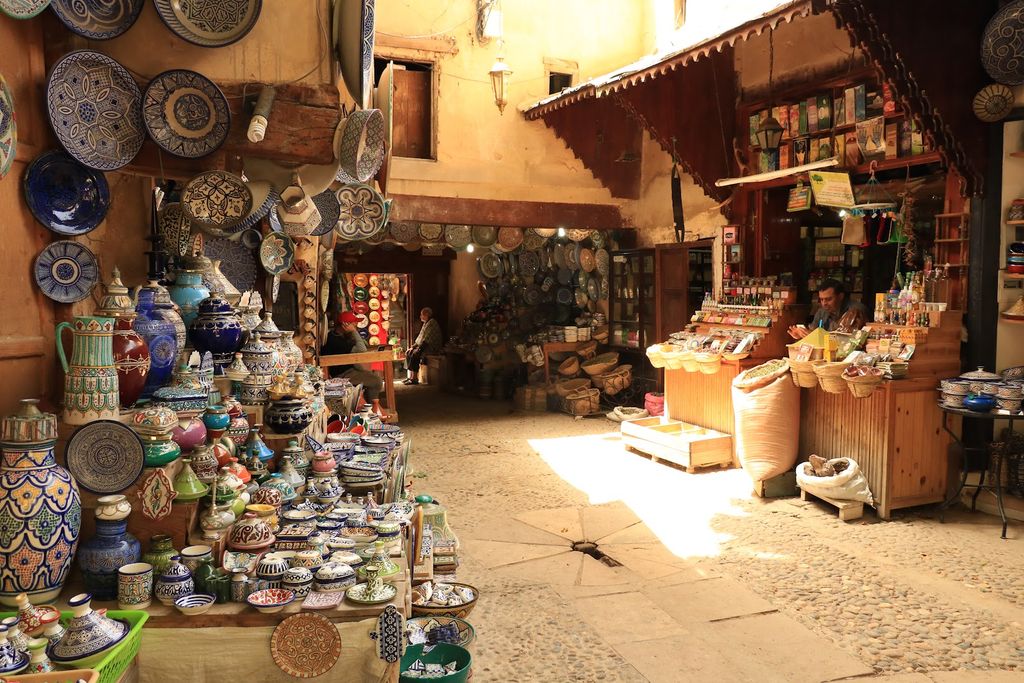
Souk el Henna (Source: Google Maps)
Souk el Henna is a lively market in the heart of the Medina, celebrated for its vibrant atmosphere and an array of traditional products. Known for its henna, spices, and beauty products, this market offers visitors an authentic shopping experience that reflects the cultural richness of Fez. Stalls are filled with colorful displays of henna powder, aromatic spices, and handmade cosmetics, attracting both locals and tourists. The market is not only a place for commerce but also a social hub where people gather to share stories and enjoy the lively ambiance. Exploring Souk el Henna provides a glimpse into the daily life of Fez, showcasing the city's vibrant traditions and artisanal craftsmanship.

Your travels, your rules.
Create your own Free Walking Tours.
Set your preferences, distances and anything you want to do or see.
Completely free, no payment required.